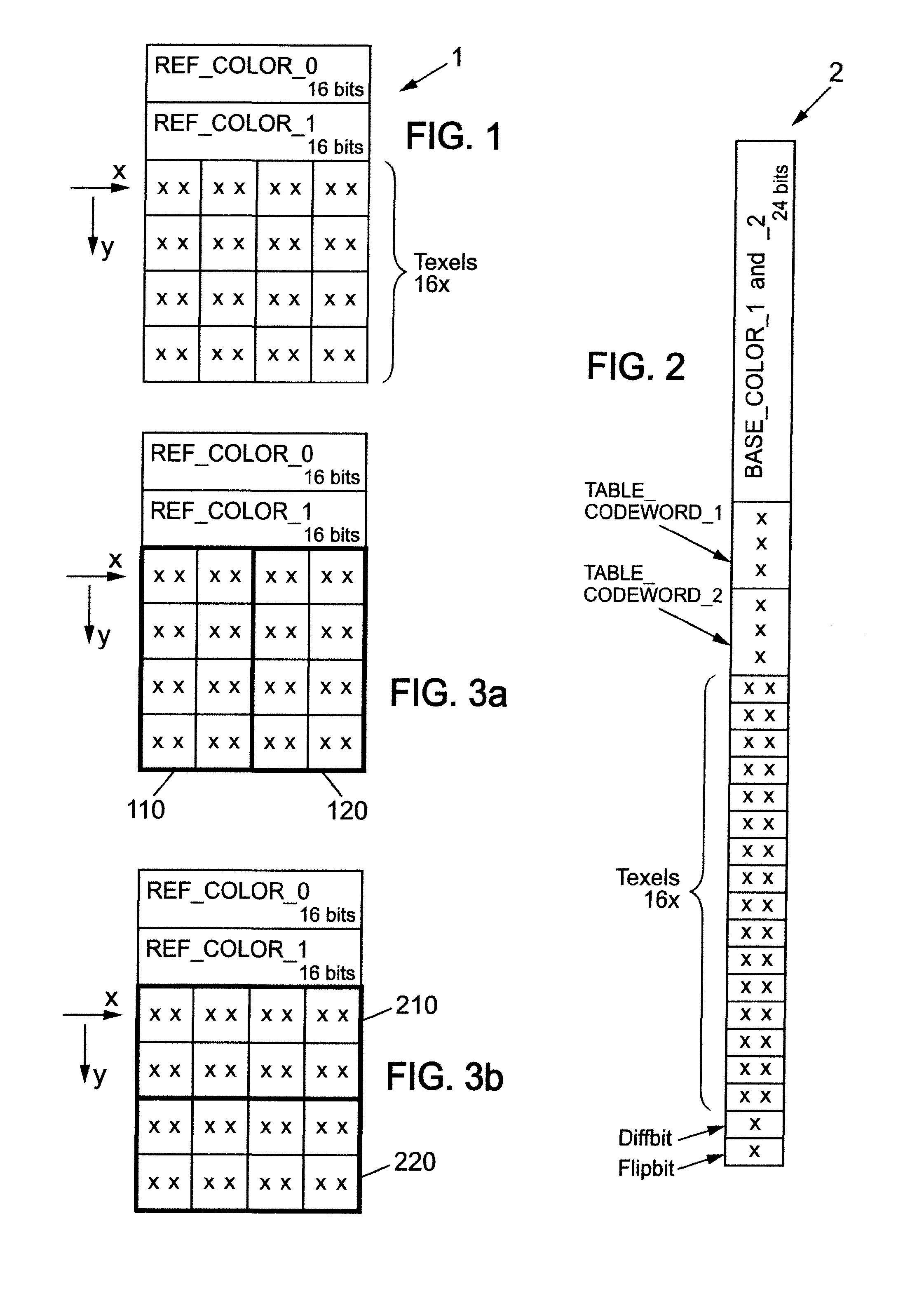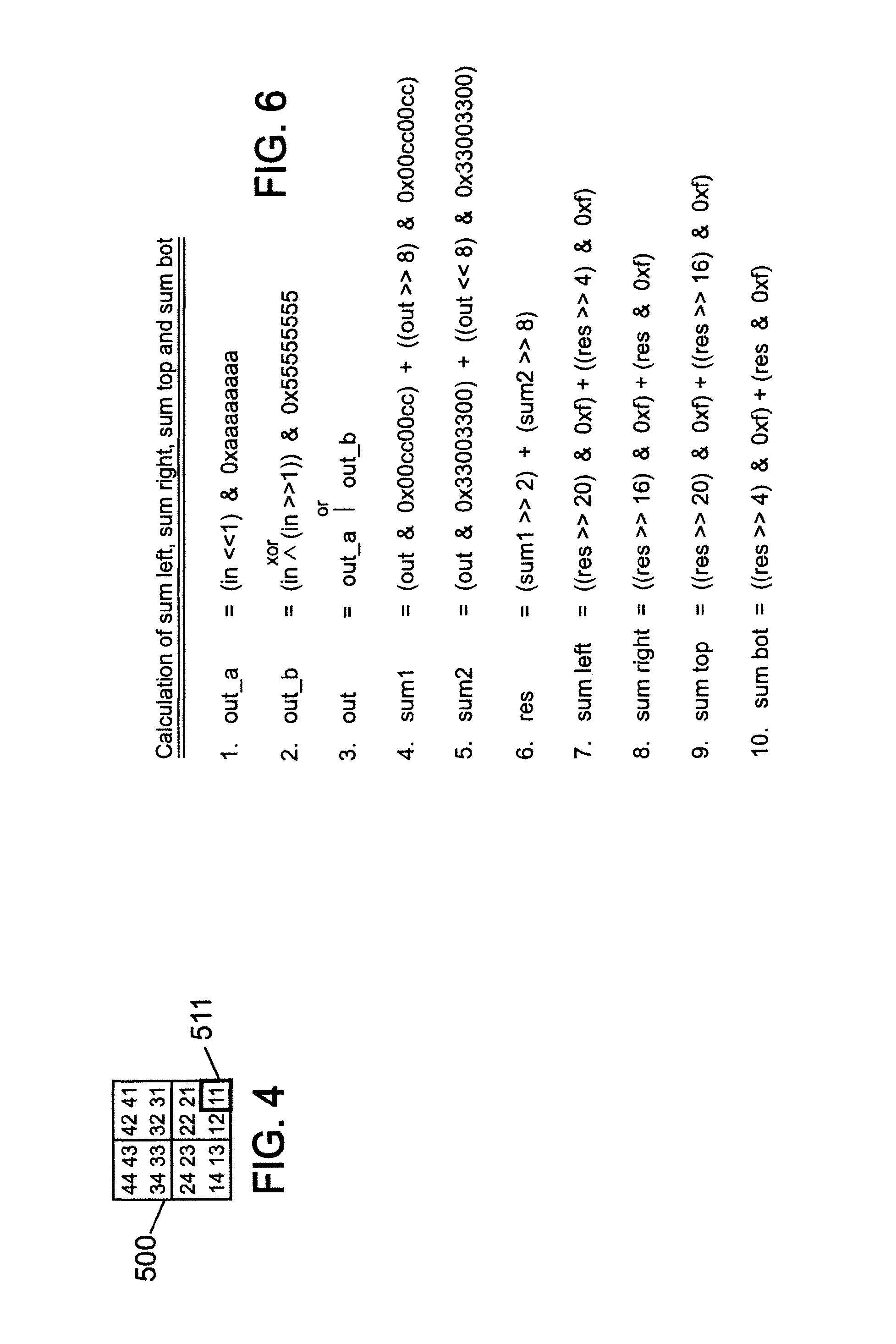Compression Format Conversion for Texture Data
a compression format and data technology, applied in the field of compression format conversion for texture data, can solve problems such as rapid computation
- Summary
- Abstract
- Description
- Claims
- Application Information
AI Technical Summary
Benefits of technology
Problems solved by technology
Method used
Image
Examples
Embodiment Construction
[0047]In FIGS. 1 to 3b, each pair of neighboring crosses within a box denotes a 2-bit placeholder adapted for holding a binary index value.
[0048]According to FIG. 1, a texture data block encoded in DXT1 compression format comprises two reference colors each encoded using a 16-bit word and denoted REF_COLOR—0 and REF_COLOR—1. It also comprises sixteen bit pairs each for designating separately one color and called texel. Thus, each texel can have one out of the four values 00; 01; 10 and 11. These texel values for DXT1 compression format have been called first index values in the general part of this specification. According to DXT1 compression format, texel values 00 and 01 indicate respectively the reference colors REF_COLOR—0 and REF_COLOR—1, directly for the texels with these values:
COLOR (00)=REF_COLOR—0, and
COLOR (01)=REF_COLOR—1.
[0049]Both reference colors REF_COLOR—0 and REF_COLOR—1 may vary depending on the texture data block considered, and allow calculation of additional co...
PUM
 Login to View More
Login to View More Abstract
Description
Claims
Application Information
 Login to View More
Login to View More - R&D
- Intellectual Property
- Life Sciences
- Materials
- Tech Scout
- Unparalleled Data Quality
- Higher Quality Content
- 60% Fewer Hallucinations
Browse by: Latest US Patents, China's latest patents, Technical Efficacy Thesaurus, Application Domain, Technology Topic, Popular Technical Reports.
© 2025 PatSnap. All rights reserved.Legal|Privacy policy|Modern Slavery Act Transparency Statement|Sitemap|About US| Contact US: help@patsnap.com



